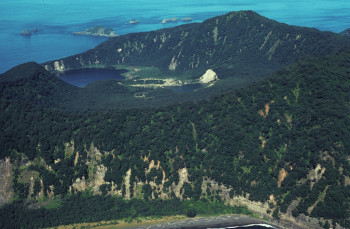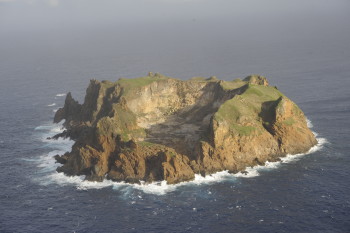
GeoNet team and GNS scientists depart for Kermadec Islands
The HMNZS Canterbury has departed for the Kermadec Islands (1000 km NE of Auckland) transporting 60 personnel and about 15 tonnes of equipment and building materials to Raoul and Curtis Islands.
The HMNZS Canterbury has departed for the Kermadec Islands (1000 km NE of Auckland) transporting 60 personnel and about 15 tonnes of equipment and building materials to Raoul and Curtis Islands. Included in this large group are two GeoNet teams and a GNS Science team. GeoNet in collaboration with DOC and LINZ operate a variety of equipment on Raoul Island. We have a regional seismic station (RIZ), the regional GPS station RAUL, VSAT communications and tide gauges at two sites, along with equipment shared with DOC for the volcano monitoring.
The GeoNet electronics team and three commercial divers will be upgrading and hardening one of the two tsunami gauge sites on Raoul Island. We run two sites (with 2 gauges at each) due to the very exposed conditions on the island to provide redundency and reliability. Tsunami gauges have been installed around the New Zealand coast and on offshore islands and they transmit the relative sea level data in real time to the GeoNet Data Management Centre. They can provide confirmation that a tsunami has been generated. The Ministry of Civil Defence and Emergency Management (MCDEM) is responsible for the dissemination of national official tsunami notifications in New Zealand.
Raoul Island as an active volcano and Green Lake has been the focus of volcanic activity in 2006, 1964, 1870 and 1840. There was also activity in Denham Bay during the 1870 and 1840 eruptions when an island grew out of the sea. The GeoNet volcano chemistry team will be busy sampling the volcano and geothermal features at Green Lake.
A further team of GNS Science staff will also conduct research work on Curtis Island, a small volcanic island about 150 km SW of Raoul Island. The island has an active geothermal system. A Seasprite helicopter will be used to transport the team ashore.
The GeoNet teams last visited Raoul Island in September 2016 with support from the offshore patrol vessel HMNZS Otago and a Seasprite helicopter. GNS Science last visited Curtis Island in 2003.



